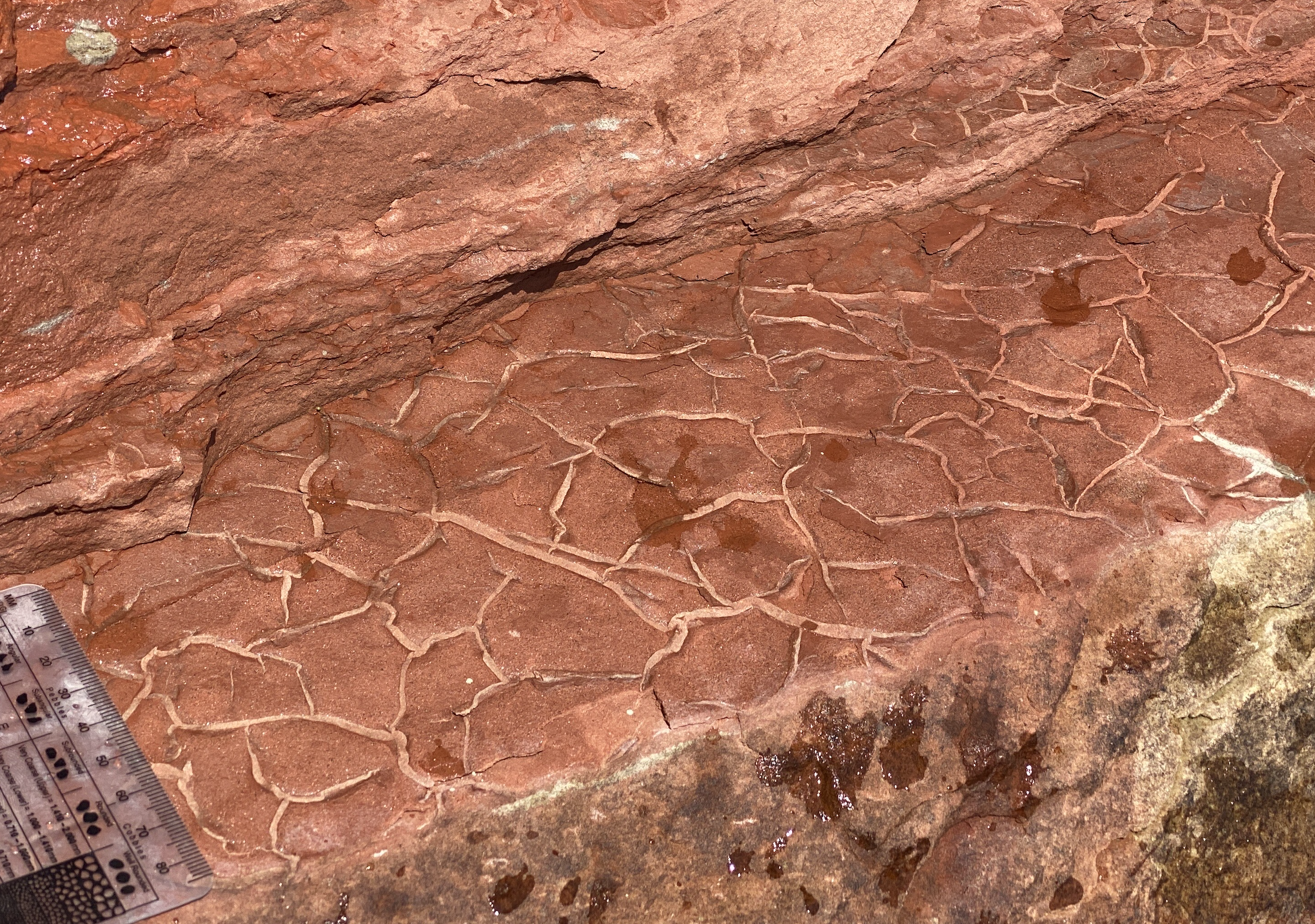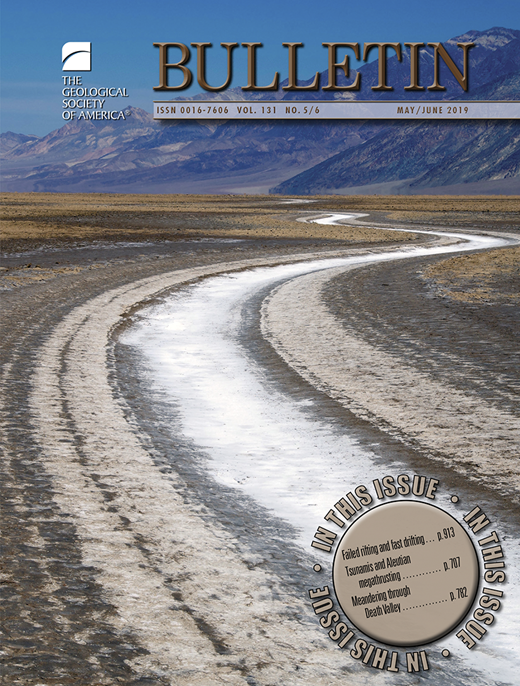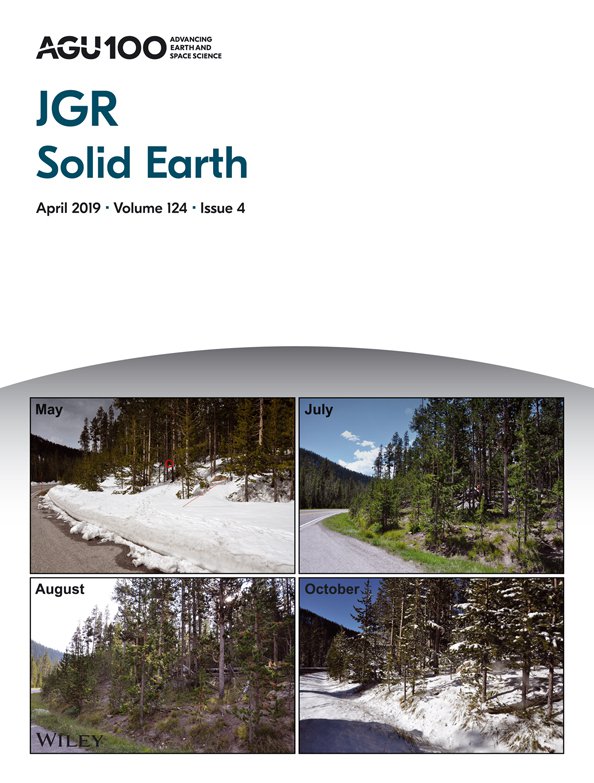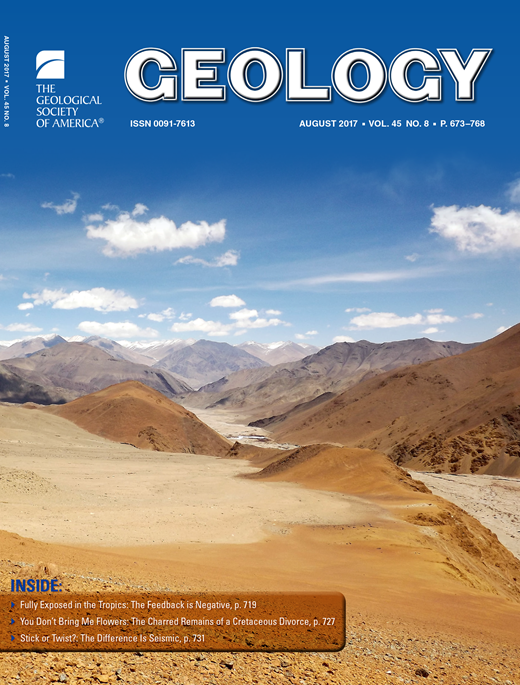
A bifurcating clastic dike comprised of sand that was emplaced into a basalt flow in the Osler Volcanic Group of Ontario, Canada. The coin for scale is a Canadian Penny that has a diameter of 1.9 cm.
As a first-year undergraduate geology student, I remember being a field trip and first observing with great puzzlement a vertical body of sandstone within a lava flow. When my professor David Bice suggested to other students and I that what we were seeing could be referred to as a “clastic dike” we were certain he was joking. We were used to seeing and thinking about dikes as being related to magmatic activity wherein rising magma forms and fills a fracture resulting in a vertical tabular body of volcanic rock. This same conflict of preconception of what a dike is with the reality that they can be comprised of sediment that we had on that field trip arose in Charles Darwin’s geologic observations while voyaging on the Beagle (Darwin, 1876). It turns out that clastic dikes where sediment cuts across other rock typically in a near vertical seam are relatively common in the geologic record and form by a variety of processes.

The photograph above is a view down onto a clastic dike that intruded into a 1.1 billion-year-old lava flow of the Keweenawan Midcontinent Rift while the smaller photograph on the right shows a more oblique view of the same dike. The iron oxide mineral hematite within the sand of the dike gives it a reddish hue that results in a striking contrast with the dark grey of the basalt flow. During the time between the eruptions of lava flows in this stratigraphic section of the Osler Volcanic Group, sandstone and conglomerate accumulated. When this lava flow advanced over wet sediment, the watery sediment would have been confined under the flow with the water turning to steam. Under high pressure, a fissure opened up in the lava flow that was infilled with sand—voila, a clastic dike. Turns out Dave Bice wasn’t joking after all.








